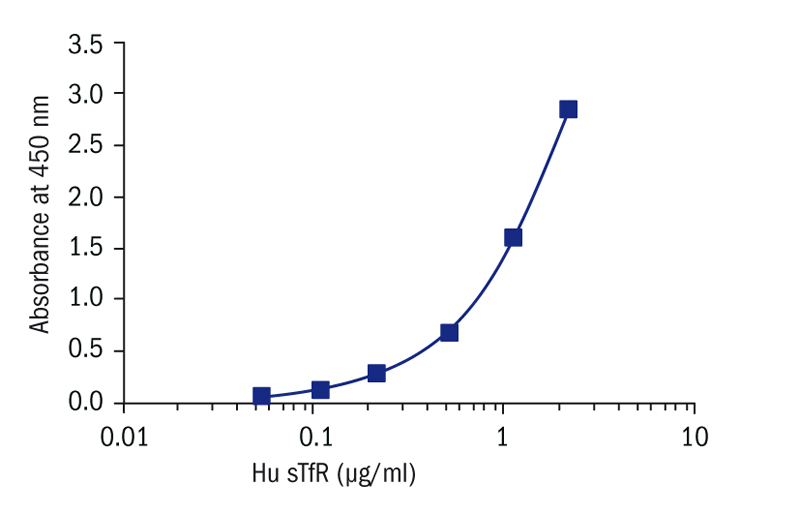Type
Sandwich ELISA, HRP-labelled antibody
Applications
Serum, Plasma-EDTA, Plasma-Heparin, Plasma-Citrate
Sample Requirements
5 µl/well
Shipping
At ambient temperature. Upon receipt, store the product at the temperature recommended below.
Storage/Expiration
Store the kit at 2–8°C. Under these conditions, the kit is stable until the expiration date (see label on the box).
Calibration Curve
Calibration Range
0.05–2 µg/ml
Limit of Detection
2 ng/ml
Intra-assay (Within-Run)
n = 8; CV = 6.8%
Inter-assay (Run-to-Run)
n = 4; CV = 6.3%
Spiking Recovery
100,20%
Dilution Linearity
94,00%
Crossreactivity
- bovine Non-detectable
- cat Non-detectable
- dog Non-detectable
- hamster Non-detectable
- horse Non-detectable
- goat Yes
- mouse Non-detectable
- rabbit Non-detectable
- rat Non-detectable
- sheep Non-detectable
- chicken Not tested
- monkey Yes
- pig Yes
- human Yes
Note
The kits are CE-IVD certified and intended for professional use.
Features
- European Union: for in vitro diagnostic use
- Rest of the world: for research use only!
- The total assay time is less than 3 hours
- The kit measures total soluble transferrin receptor in serum and plasma (EDTA, citrate, heparin)
- Assay format is 96 wells
- Quality Controls are human serum based. No animal sera are used
- Standard is natural human blood isolated sTfR based
- Components of the kit are provided ready to use or concentrated
Research topic
Iron metabolism, Oncology
Summary
The transferrin receptor (TfR) is the gateway for transferrin-bound-iron entering all body cells. TfR is abundant on the surface of many newly formed cells, but the erythroid marrow cells account for 70 to 80 % of the total body TfR content. The soluble (or serum) transferrin receptor (sTfR) is a circulating truncated form of the membrane receptor protein; it is an 85 kDa glycoprotein forming in serum a 320 kDa complex with diferric transferrin. The serum sTfR concentration reflects the total body mass of cellular transferrin receptor. Anaemias associated with enhanced erythropoiesis and iron deficiency result in an elevation in the sTfR values. Elevation of the soluble transferrin receptor may be also caused by haemolytic anaemia, polycythaemia and thalassemia while aplastic anaemia and chronic renal failure may result in its decrease. The most important clinical use of the sTfR determination is in the differential diagnosis between iron deficiency anaemia and the anaemia of chronic disease.
Find documents for the lot
Example Instructions for Use (RUO)
Example Instructions for Use (RUO)
Safety Information (RUO)
MSDS (RUO)
MSDS (RUO)
MSDS (RUO)
Product Brochure
CE IVD Assays
Other Documents
Declaration of Conformity

